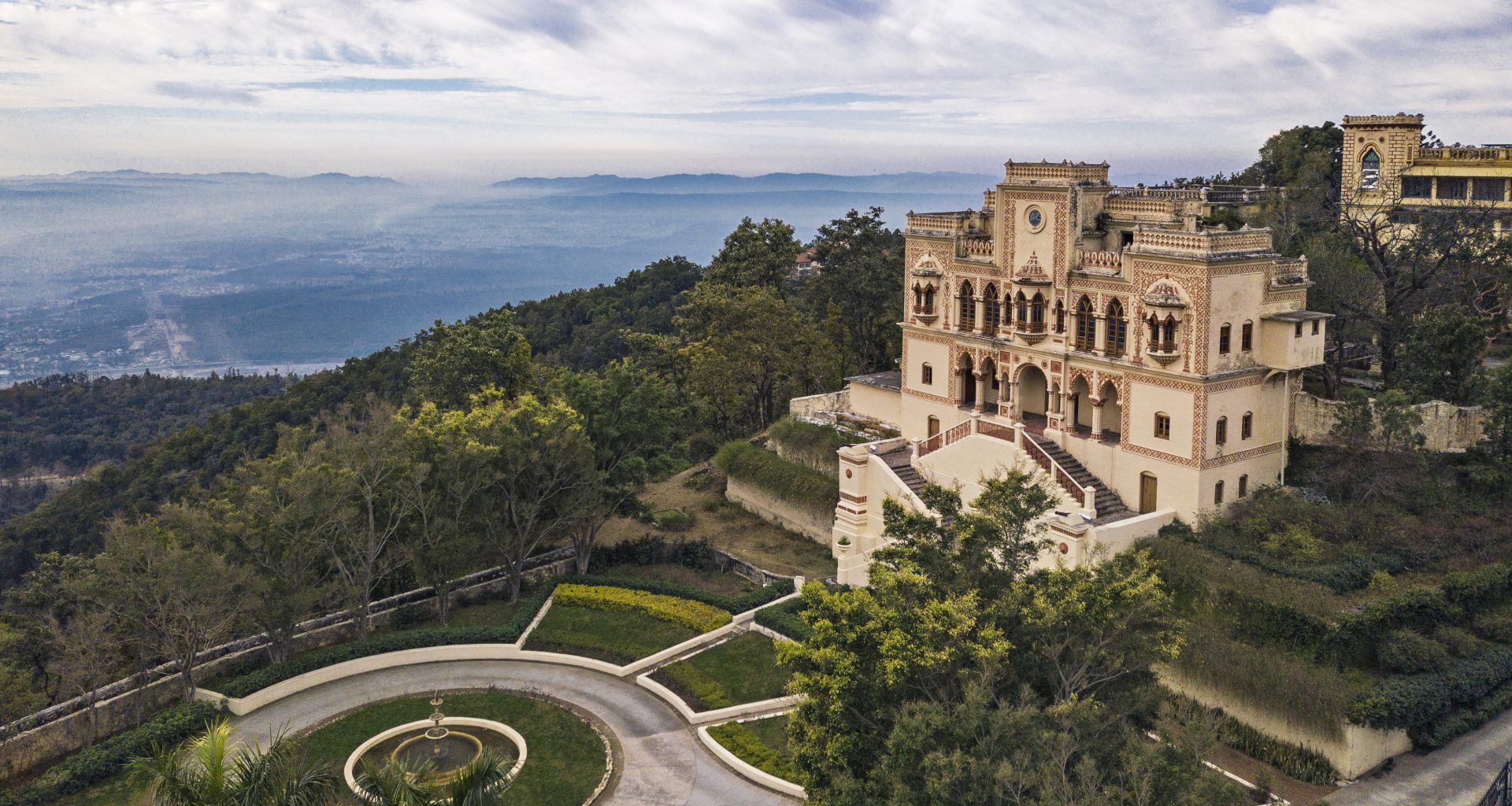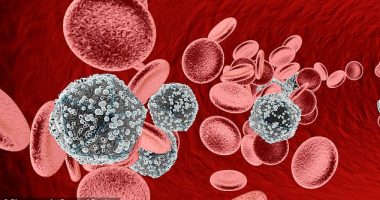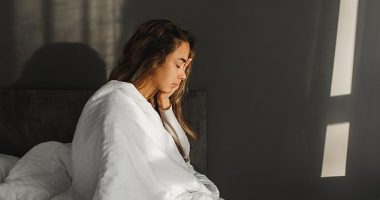Last spring, an email about the newly launched Sleep Enhancement Program at Ananda in the Himalayas landed in my inbox. I was intrigued straight away. A wellness program integrating ancient Ayurvedic practices and principles, customized for my dosha (constitution) and lifestyle, correcting my many wrongs through spa treatments, physical and emotional therapy, and chef’s cuisine… all on a former Maharaja’s sprawling estate nestled on the foothills of the Himalayas? Don’t twist my arm. Excited as I was as I geared up for my visit, a doubt lingered in the back of my head: Could a seven-day program really solve a lifetime of sleep issues?
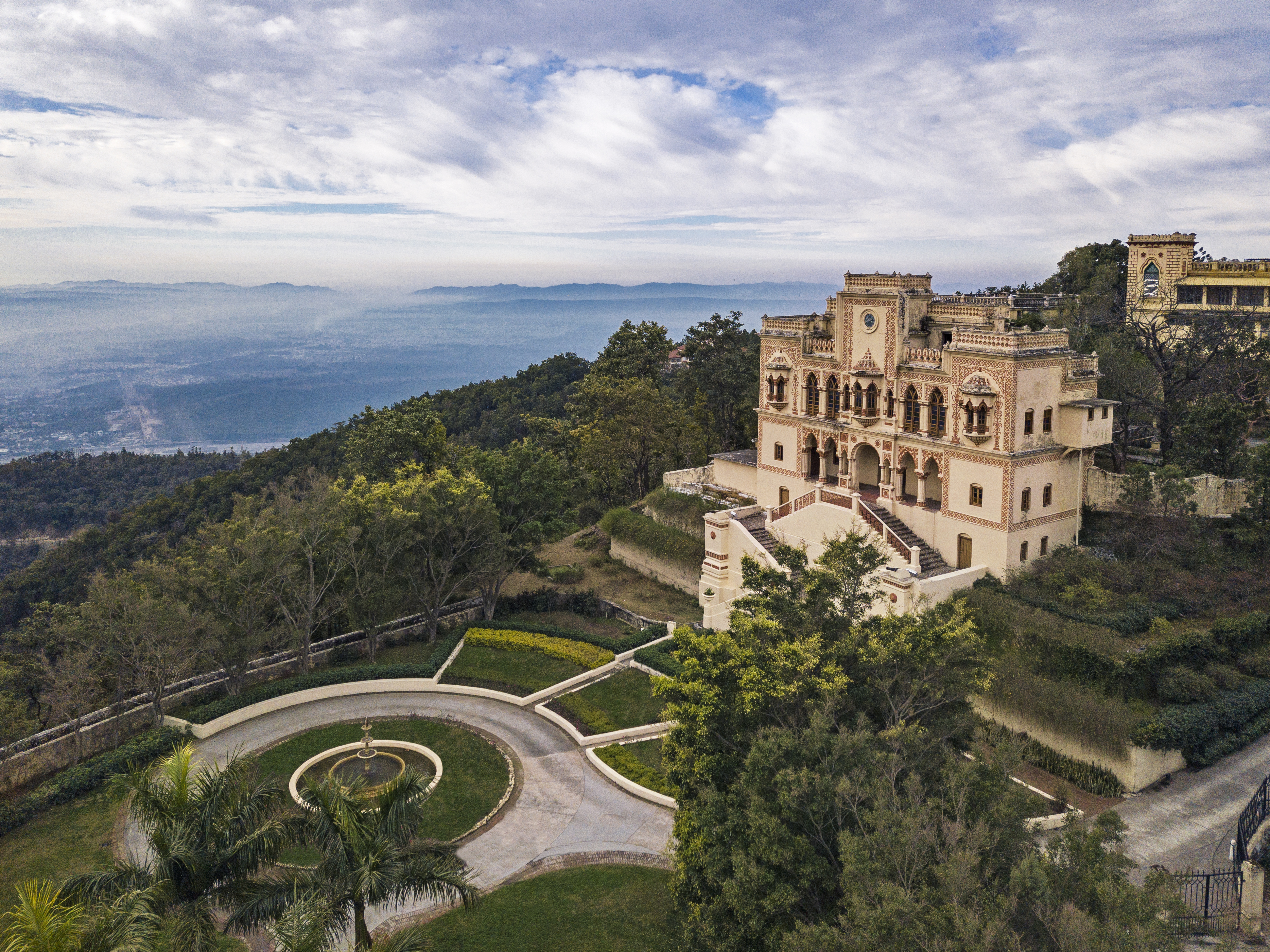
Two weeks before boarding my flight to India, Naresh Perumbuduri, MD, senior Ayurvedic physician at Ananda, addressed this concern in my pre-arrival Zoom consultation. He kept it real, recognizing that I was unlikely to experience any miracles within a week’s time. However, I’d gain a better sense of how to manage and optimize my rhythms from sunrise past sundown. (Frankly, his honesty around these expectations relieved me, especially since the wellness world can make a lot of lofty promises without actually following through with them.) We also discussed my medical history, habits, and overarching health status as I’d covered in a thorough Ayurvedic health questionnaire.
Experts In This Article
Before signing off, I told Dr. Perumbuduri that I had one non-negotiable: Coffee *must* remain on the literal and figurative table. Fully expecting a battle since caffeine and sleep are antithetical to each other, to my surprise, he only laughed and said that wouldn’t be a problem. Perhaps I could gradually reduce my intake, but he didn’t recommend going cold turkey as it’d only make the craving grow stronger. (Best. Doctor. Ever.) With that, I was disarmed and officially on board to fully commit to the program. It actually started early as I received dietary and lifestyle recommendations to reduce ama (toxins) and reset agni (digestive fire) so my body could readily accept the herbs in my dosha diet upon arrival.
Before signing off, I told Dr. Perumbuduri that I had one non-negotiable: Coffee *must* remain on the literal and figurative table. Fully expecting a battle since caffeine and sleep are antithetical to each other, to my surprise, he only laughed and said that wouldn’t be a problem.
Once I arrived at the lush 100-acre Palace Estate, I was greeted with a welcome ritual, adorned with a mala necklace, and received my jam-packed itinerary—which averaged around five appointments per day and maxed out at eight. I was shuttled in a golf cart from the restored Viceregal Palace past pristinely tended gardens and a quietly ripping tiled waterfall to my deluxe room overlooking the spiritual hub of Rishikesh. I could get used to this, I thought to myself, enjoying a moment of stillness before diving into things straight away.
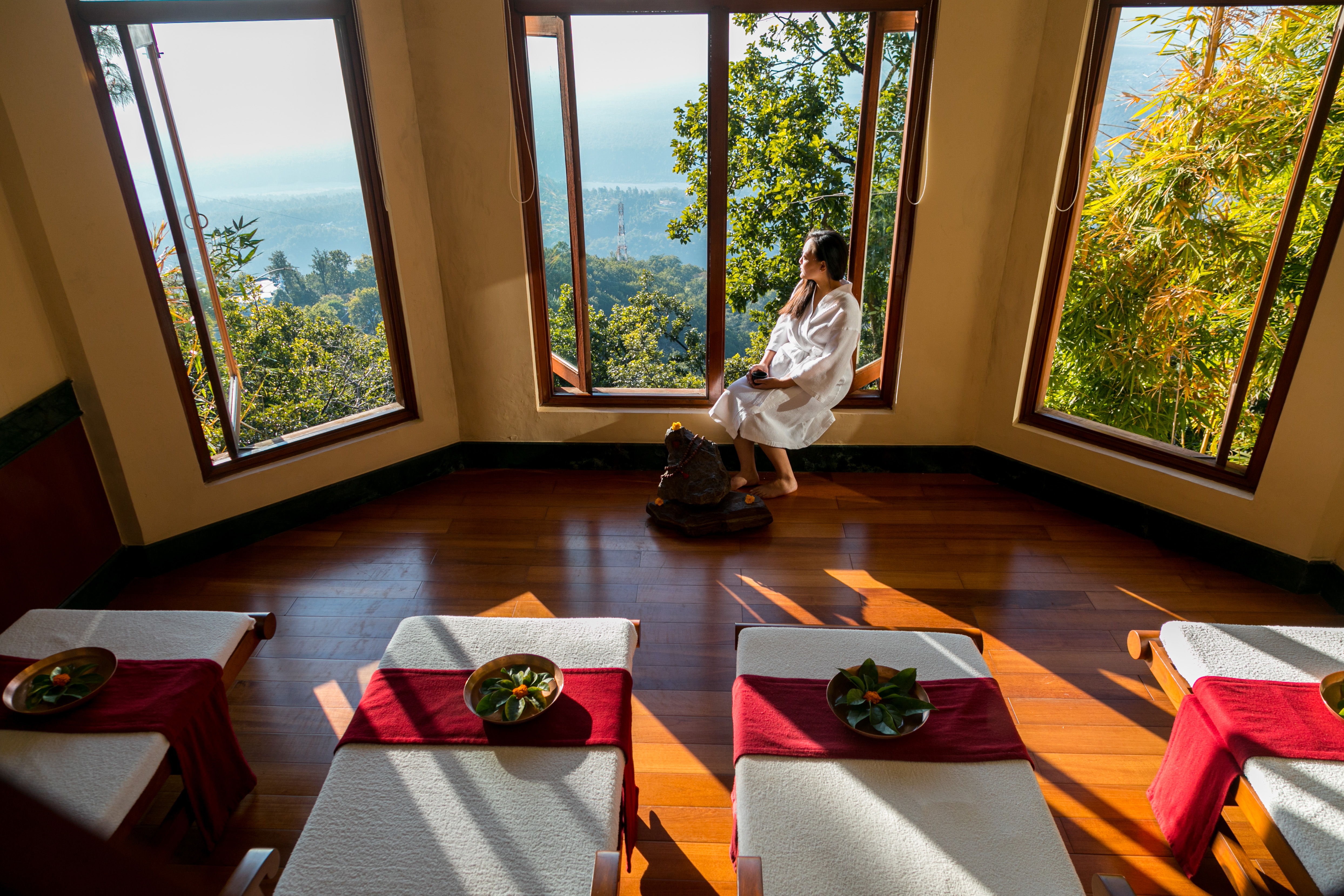
First up: an hour-long IRL consultation with Dr. Perumbuduri, during which he recapped the principles of Ayurveda, Ananda’s philosophies, and the what and why behind my own constitution. He reiterated that I was a vata pitta, with primary vata (air and space) energy and secondary pitta (fire and water) energy. This surprised me, as I’d been ‘diagnosed’ as the reverse during an Ayurvedic module in my yoga teacher training a few years back. Also, I’d always associated myself more closely with fiery energy (and not only because I’m a passionate and sometimes tempestuous Leo).
And yet, Dr. Perumbuduri confirmed that I was absolutely a vata: prone to stress, irregular sleep patterns, and an obsession to know and absorb *all* the things… yet privy to experiencing intense pitta emotions, which misalign me from my true self. He likened it to wind fanning the flames of fire, which could spread when my doshas were out of whack. I felt exposed, seen, and speechless (all in a good way) as he read me like a book. The goal of the program would be to balance my vata energy first and foremost. Improvements in cellular function—and thus better sleep and overall well-being—would follow suit.
Dr. Perumbuduri confirmed that I was a vata: prone to stress, irregular sleep patterns, and an obsession to know and absorb *all* the things… yet privy to experiencing intense pitta emotions, which misalign me from my true self.
Apparently, I’d lived my most of my life adhering to a diet that was misaligned, in ways, with my dosha and Ayurvedic dietary principles: drinking coffee for breakfast, subsisting on cold foods and iced drinks, munching on raw veggies, keeping inconsistent mealtimes, eating large dinners, and midnight snacking. For the full week, I’d stick to a vata diet balancing carbs, protein, and primarily cooked veggies prepared with grounding herbs alongside warm and room-temp drinks. My first dinner—earthy bottle gourd soup with cumin, vibrant basil fish tikka with coriander and mint chutney, and semolina gnocchi topped with scallion aubergine caponata, balsamic vinegar, and and beetroot cream—set a high bar in terms of taste and presentation. Fortunately, the fresh and fragrant cooked meals—complemented by a smorgasbord of fruits, salads, and spreads at breakfast and lunch—never ceased to delight thereafter. I left nary a crumb on my plate at any meal (for three meals a day, at that, compared to my typical two). I’d also sip on a dreamy sleep infusion tea with chamomile, saffron, nutmeg, and cardamom as a nightcap, which replaced my standard of sweets.
As for the itinerary itself: The most succinct way I could describe the extensive list of treatments and meetings is hardcore healing. The back-to-back massages, meditations, body work, and energy and emotional healing sessions were akin to Olympic training for wellness. Frankly, it was a lot—and fortunately, it was right up my alley. While all of Ananda’s programs include a combination of their five pillars (Ayurveda and Holistic Wellness, Yoga and Meditation, Emotional Healing, Healthy Cuisine, and Spiritual Awareness) some will be more prominent from one itinerary to the next. For instance, my schedule was packed with calming, grounding rituals to counteract the rumination and anxiety contributing to my lifetime of fatigued days and fidgety nights.
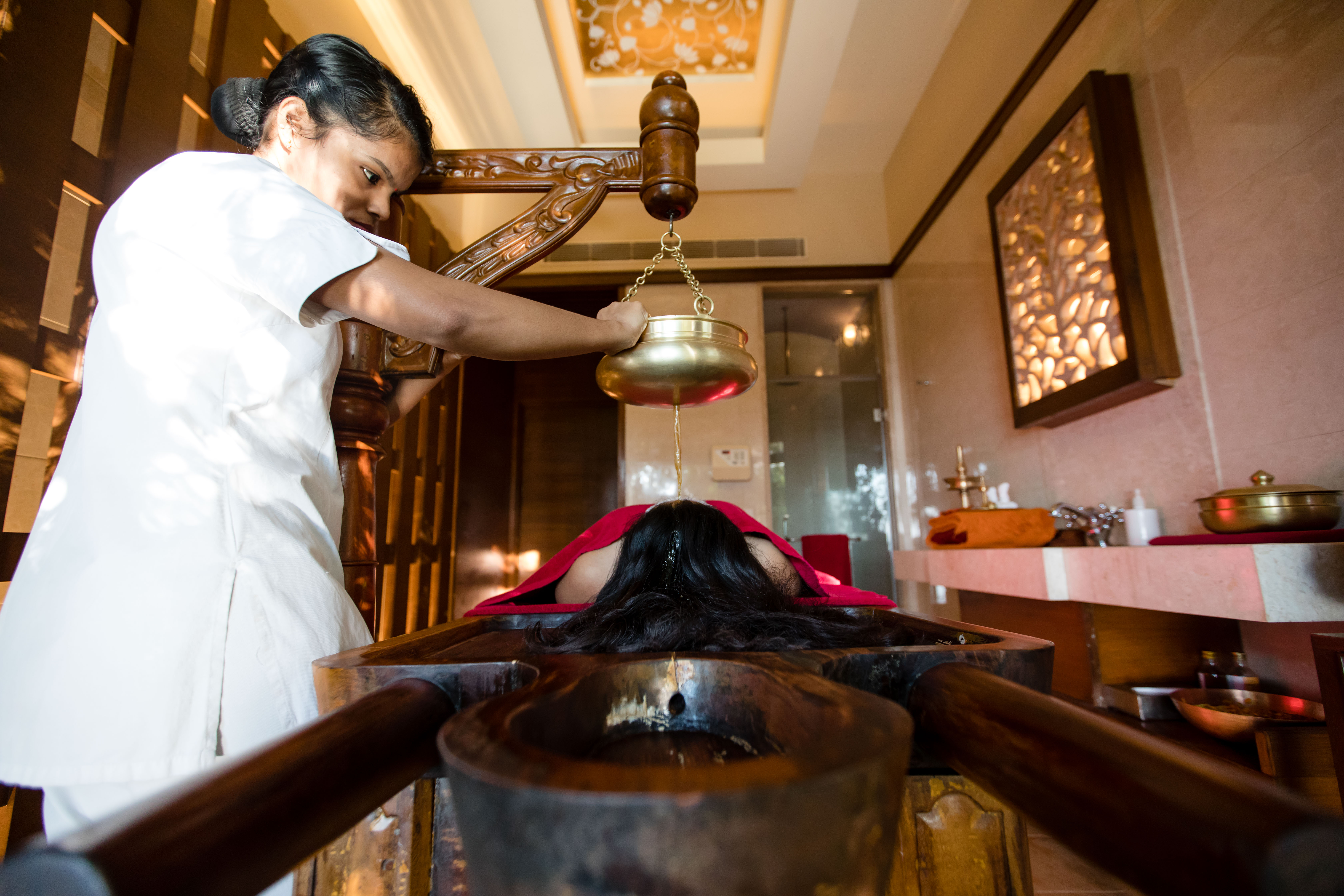
My favorites among them were an aromatherapy massage with rose, sandalwood, and vetiver to facilitate calm, balance, and relaxation; plus two Tibetan Kyu Nemassages—aided by the most intoxicating blend of lavender, lemongrass, patchouli, and jasmine—to balance the five elements and restore the nervous system. I needed a gentle nudge to open up to Shirodhara, a classic Ayurvedic ritual of slowly pouring medicated oil on the forehead, which was the most frequent treatment in my lineup. Drenching my breakout-prone skin with gallons of oil wasn’t exactly my first choice to unwind, but Dr. Perumbuduri assured me that it was a gold standard to pacify the mind and help normalize sleep patterns via the third eye chakra. The least I could do was take his word for it. After all, the kind man gave me the green light on coffee.
As much as I try to do right by my body through gentle movement, I’ve long struggled with neck and upper back pain, which also contributes to some of my sleepless nights. My physiotherapist, Dr. Palak Jain, provided me with a diagnostic rendering of my physical imbalances and corrective postural exercises to mitigate my aches.
Physical fitness was emphasized the least since I keep a consistent routine of yoga, Pilates, and long walks. To my delight, these forms of fitness were exactly what the Ayurvedic doctor ordered for my dosha. (Nonetheless, I opted into a sunrise group hike, broke a sweat at the gym, and kept up my solo yoga practice throughout the week.) As much as I try to do right by my body through gentle movement, I’ve long struggled with neck and upper back pain, which also contributes to some of my sleepless nights. My physiotherapist, Dr. Palak Jain, provided me with a diagnostic rendering of my physical imbalances and corrective postural exercises to mitigate my aches. Plus, Dr. Jitendra Uniyal capped off my Chinese Medicine session of acupuncture, cupping, and moxibustion by pricking tender (read: painful) points on my hamstrings that dissolved some of that upper body tension in an instant.
On the spiritual awareness front, I attended talks by a visiting Vedanta scholar on how to handle negative emotions and the double-edged sword of expectations. Towards the end of the program, I was driven down winding roads to Rishikesh to witness the nightly Ganga Aarti devotional ritual, enchanted by the music and merriment along India’s holiest river.
The most transformative moments during my stay occurred during my emotional healing sessions with consulting therapist Shikha Sud. Across two sessions spanning hypnotherapy and inner child work, I began healing wounds that had plagued my subconscious through some of the most difficult periods of my life—spanning pre-birth and infancy into my teenage years and the present day. I was guided to hold, hug, and heal my past selves who felt alone and helpless in my most vulnerable moments, and for the first time was able to forgive and make peace with family traumas. In truth, I accomplished more in these two sessions than I did with a handful of therapists and meds over 20+ years. (And they said that miracles weren’t on the menu.)
Now, for the ultimate question: Within a week’s time, did my sleep quality take a 180? Not quite… but that’s not to say that the program failed in any way. Since my sleep issues are only a symptom of other root causes—namely anxiety and some less-than-ideal dietary and lifestyle habits—identifying and working on those offered palpable benefits straight away. Moreover, the level of care and attention from everyone at Ananda in the Himalayas made no small impact.
I was guided to hold, hug, and heal my past selves who felt alone and helpless in my most vulnerable moments, and for the first time was able to forgive and make peace with family traumas. In truth, I accomplished more in these two sessions than I did with a handful of therapists and meds over 20+ years.
I can say without a shadow of a doubt that I’ve never been looked after so thoughtfully in my life. As someone who had to learn to depend on herself at a young age, being seen and cared for by others—and allowing myself to lean into that—was transformative in and of itself. Midway through my stay, when a personal issue (completely unrelated to the program) threatened to derail my progress, Dr. Perumbuduri revised my schedule to bring my nervous system back to balance, even scheduling several treatments under the care of a spa therapist whom I briefly mentioned I’d enjoyed reiki with. Such small but meaningful gestures brought me to tears. By the time I sat down for dinner that night, I looked past the trees into the valley below with an empty mind for a few minutes’ time: no small feat for someone prone to running a mental mile a minute. I experienced similar moments of peace and presence during breakfast the next day and at lunch the day after that—simply observing and revering the beauty of the grounds and easing into the magic of inner silence and serenity.

As they say, all good things must come to an end. Since exiting the destination spa’s palatial gates and integrating back to city life, I’ve been doing what I can to take Ananda, which translates to ‘the state of absolute bliss,’ with me from one day to the next. For the first time in years, I’ve committed to falling asleep naturally—that is, without the aid of medications and supplements—so my ZZZ’s are still touch and go. I know it’ll take time for my body to adjust, but I’m heeding my doctor’s (and yes, even my own) advice to normalize my circadian rhythms by capping my amount and timing of coffee intake, improving my meal patterns, and prioritizing earlier workouts. Post-Ananda, I’m also less prone to huffing and puffing my way through life and now operate from a quieter, more harmonious place. (Well, at least more so than in years past.)
“Healing is an ongoing process which must continue beyond your time at Ananda,” reads the opening pages of the journal Ananda provides upon arrival. “Our time together aims to put you on this path of knowing, hand holding you to walk through this journey called life.” While I’m rarely one to extend my hand and ask for help, I discovered that it was necessary to be ‘coached,’ wellness Olympian style, to begin a new chapter as a calmer, more complete me.
Source: Well and Good

